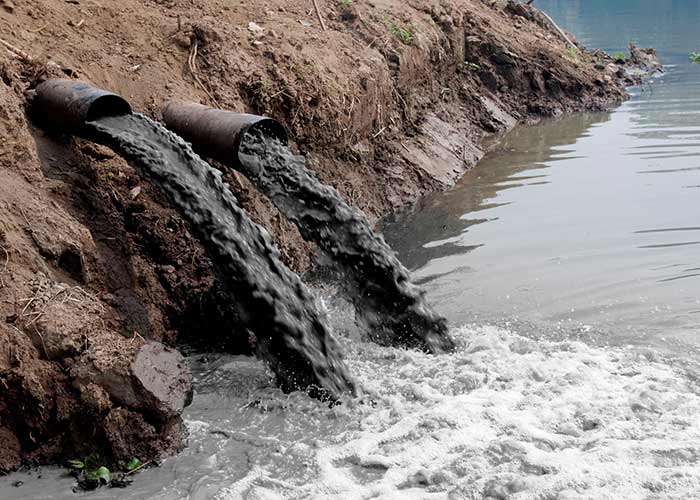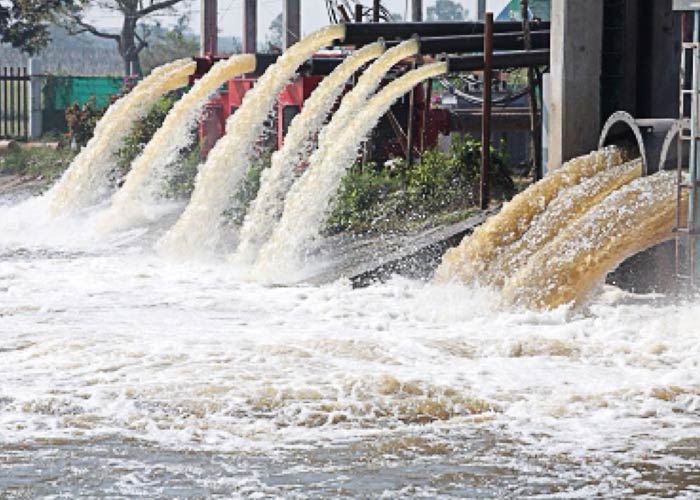In scientific terms, air pollution is caused by the presence of chemicals and compounds, which adversely affect the quality of air. Every gas present in the atmosphere has got a fixed value. If any of these gases increase, it leads to air pollution, which is very harmful to Planet Earth.
To avoid air pollution, people tend to imprison themselves in the house and think that they have escaped from the polluted air. They think that they have to face the air pollution when they get out of the house, and inside the house, they are safe from the air pollution, but all of us are wrong to think so. Because there are many factors inside the house which cause indoor air pollution.
Impact of Indoor Air Pollution
The level of pollution has increased so much that our house is no longer safe from it. In fact, pollution grows not only outside but inside the house too. From home-grown products to passive smoking, indoor air is prone to pollution. The polluted air inside the homes can be detrimental for life. It causes millions of people to die every year. According to the World Health Organization (WHO), the air inside homes is no longer pure. Indoor air pollution enters our body with poisonous effect. Polluted air is also one of the major causes of TB and respiratory diseases.
Due to air pollution not only the life in a city but also the living standards of the villages are getting affected. Even those who are healthy are facing the risk of heart and lung related diseases. In fact, there is more pollution inside than outside the house.
Problem of Indoor Air Pollution in India
As per the World Health Organization (WHO) report, around half of the world’s most polluted cities are from India. We should try to keep our homes, offices and public places clean.
There are various carriers of pollution in our homes, which defile the air of our house. Indoor air pollution is caused by such factors which can be in the form of dust, soil particles, garbage, pollen etc. We do not see them with open eyes.
Ways to Reduce Indoor Air Pollution
Air pollution in all cities of the country has become a major problem. But there are ways to avoid air pollution. Whether you are in the office, at home or somewhere else, there are many ways with which you can protect yourself from air pollution. These ways entail no use of technology.
- Keep the smoke away
To begin with, immediately banish the factors present inside the house, which emit soot or carbon. In most of the houses, lamps, incense, candles, camphor etc. are burnt, from which smoke spreads in the house. The climate of our home is polluted by this same smoke, which has a negative effect on our health. Therefore, it would be good to keep these things out of the house or use them in limited quantities.
- Say No to Plastic
We often buy plastic plants to decorate our homes to give them a new look. The dust that settles on them can give us sinus and allergies. Using such items should be avoided.
- Do Regular Dusting/Cleaning
Pollution in our homes is found in objects such as mattresses, pillows, sheets, sofas, and carpets, which we do not see. It is advisable to wash them from time to time. At least they should be kept dusted from time to time.
- Keep your home ventilated
To avoid indoor pollution, it is important to avoid the blockage of air in your home. Install the ventilation system in your house in such a way that cleans air comes and goes out of your home at all times. Especially if you have better ventilation in your living and kitchen areas, you can avoid pollution. There are many solutions for this, which you can use such as chimneys, big windows, smoke hoods, etc.
- Inculcate Good Habits
You can avoid indoor air pollution by changing your habits. For example, if you use wood as a fuel, it would be better if you dry them well in the sun before using them. This will burn woods easily and the smoke will be less. Secondly, you can also protect your children from air pollution by keeping them away from pollution-causing objects.
- Use Alternate Fuels
Indoor air pollution can come down heavily if we use alternate fuels instead of solid fuel such as biomass, wood, coal etc. Nowadays there are many such options, such as LPG, biogas, solar power and electricity etc.
At the same time, in rural areas where alternate fuels are not easily available and only biomass is used as fuel in most homes, you can avoid by using better stoves/hotplates instead of traditional ones. Nowadays there are many such good hobs in the market, in which biomass is used in the form of fuel but they spread less pollution. Apart from this, they are designed in such a way that they have better combustion and take less time to cook.
- Turn to Nature for Help
Air pollution has become a major problem in all cities of the country. But there are ways to avoid air pollution. Whether you are in your office, at home or somewhere else, there are many ways with which you can protect yourself from air pollution. These ways entail no use of technology.
The solution to our every problem lies with nature. In fact, for all people, natural air purifiers can be a better option. Yes, some plants are such that naturally purify the air for us. By putting them in the house, you can clean the air of your home.
Plants not only make our homes beautiful, but also provide us fresh air. With fresh air we can overcome pollution in our home. For this, we should grow such plants in our house, which absorb polluting factors.
- Air filtering plants
Thanks to NASA’s research, it has been proved that the leaves and roots make the pollutants inherent and cleanse the air of our house. For this, you can put Money Plant, Aloe Vera, Basil, Boston Fern, Aloe Vera, Lily, Snake Plant, Pine Plant, Arica Palm and English Ivy etc in your home. These plants are readily available at a very low cost. Along with this, it is also easier to maintain them. But if you have children and pet animals in your home, take care that none of these plants is poisonous.
Growing indoor plants that work as natural air purifiers is a great way to keep our immediate environment clean. Many plants may work very effectively to reduce poisonous gases. Called air filtering plants, these plants will help you combat itching, irritation, frequent colds, allergies and irritation in the eyes.
Here are some indoor plants which can be easily found in the country, and which help in keeping the air clean. Let’s know about these plants as under:
- Areca Palm
Areca Palm or Golden Cane Palm (Chrysalidocarpus Lettaceus or Dypsis Lutescens) is people’s favourite plant with its airy leaves and beautiful green colour. This plant is helpful in filtering air and making it pure as it turns carbon dioxide into oxygen. One such plant with shoulder-high growth is needed for every person.
When Areca Palm is planted in living rooms, courtyard, balconies and bedrooms, it not only removes toxic gases such as formaldehyde, benzene, and carbon monoxide, but also maintains excellent moisture in the environment. Areca Palm can be grown very easily in small pots, but it grows up to a great height.
To care for this plant, it is necessary to clean its leaves every day. Apart from this, it is also necessary to keep it out every three-four months. Use moist soil and water the plant if you notice drying of the soil slightly below the surface.
- Money plant
Money Plant (Epipramem Aureum) is easily found in Indian homes. It is said that it attracts positive emotions and enhances the prosperity of the house. It is a climber and the size of one of its leaves is 7 to 10 centimetres long. This plant’s special characteristic is that it can stay alive in very low light and can also be grown in an empty bottle.
Money plant has the ability to absorb the existing carbon dioxide in the air and give pure oxygen to breathe. The plant which is good for maintenance, easy to grow, effectively destroys formaldehyde from air.
- Aloe Vera
Aloe genus of Aloe Vera plant is very popular due to its medicinal properties. Most people develop it to extract juice; a kind of juice is produced after extracting the inner part of the leaf. Its juice is a natural moisturizer and beneficial ointment. It is used in the treatment of many diseases.
The plant needs very little water to grow. Its leaves are quite thick and strong. Apart from this, the special thing is that this plant can be easily planted in the house, which keeps the air pure. It is a sun-flowering plant and it can be easily applied on the window frames. This helps in purifying the air by eliminating benzene, formaldehyde and the contaminated gases that come out of the chemicals.
- Snake Plant
Snake plants, sometimes called the sausage tongue (Sansevieria triphacitata), can also usually be seen in Indian homes. This plant grows well, it is very resistant to infection, and it is very beneficial to grow this plant. Snake Plant is one of the best indoor plants to eliminate benzene, nitrogen oxide and other airborne toxic gases such as formaldehyde and trichloroethylene from the atmosphere. Termed as Naag Paudha in Hindi, this plant needs very little sunlight to grow. Apart from this, it does not need too much water. You can easily grow this air filtering plant in one corner of your room or office cabin.
- Pine Plant
The cedar plant is quite famous for making the house air pure. The leaves of this plant are small. It does not need much care. But it needs to be pruned from time to time.
- Peace Lily
Peace or Cool Lily (Spathipilim) is the species originally found in America and Southeast Asia. Due to its beautiful blooming flowers, this is a favourite indoor plant commonly developed in homes, large offices and hotels. It is very much liked as a plant that can easily remove Ammonia, formaldehyde, benzene, and trichloroethylene from the atmosphere and purify the air. Peace Lily eliminates all kinds of harmful gases. It also eliminates dust and keeps the air clean.
- English Ivy
This plant is most suitable for low-light areas. By eliminating all the poisonous gases present in the atmosphere, this plant helps us to breathe clean air. If you are looking for a creeper plant to decorate an empty space in your home or office, which acts as an air purifier, then English Ivy or Hedera helix is the best choice for you. It removes contaminated air such as formaldehyde, benzene, and trichloroethylene that can also be toxic for dogs, cats and pets.
- Mother-in-Law Tongue
It is a plant that flourishes under any circumstances. It is very strong. Its special quality is that it does not only release oxygen at night but also eliminates many other harmful gases. The height of this plant should be as far as the waistline. Keep it in the indirect sunlight and do not give too much water.
- Chrysanthemum
This is a flower plant which Indians generally like to grow in gardens. Its family name is Estresia crysthanams and the colour of these flowers is very tempting. Chrysanthemum plants are most commonly grown in the courtyard or garden of the house. When the flowers of the chrysanthemum are blooming, they produce sweet aroma. Chrysanthemum is useful in purifying air as it eliminates ammonia, formaldehyde, and other toxic substances.
- Dresena
Dresena (Janet Craig) is another indoor plant that develops indoors with minimal sunlight and care. It easily reduces toxic gases like pharmaldehyde, benzene, xylene and trichloroethylene, which spread in the environment. Many varieties of Dresena are easily found in tropical areas. Although some parts of the plant can be poisonous for pets, it will need to be cared for.
- Flamingo Lily
Flamingo Lily (Anthurium endrenum) is often seen mainly in bouquets. If Indian homeowners are looking for low-maintenance indoor plants, then this plant acts as purifier of the air. This plant destroys toxic gases such as formaldehyde, xylene, toluene and ammonia from the atmosphere.
- Spider Plant
Spider Plant (Chlorophyte Comosome) is a versatile indoor plant. It requires very little sunshine and water and it can be grown in small pots. It can also be used to decorate the windows, side tables, floors and courtyard. This is a perennial flowering plant. Its leaves are long and ribbon-shaped. This plant keeps the air clean from the gases like formaldehyde, xylene and toluene.
- Rubber Plant
Known by many names, the biological name of Rubber Plant is Ficus Elecica. Rubber Plants are commonly found in Florida, India, Nepal, Bhutan, Myanmar, China, Malaysia, Indonesia, Sri Lanka, West Indies and America. Usually, it is known as an ornamental plant. But its biggest feature is that it prevents the air inside the house from being polluted.
- Boston Fern
This plant cleans more formaldehyde than other trees. Apart from this, it also removes benzene and xylene. This is a good plant to hang in a basket.
- Trees to Grow Near the House
Plants of trees such as peepal, neem, berry, banyan and gular are readily available, they save us from poisonous gases. Apart from this, trees such as harad-behera, amtalas, climber, soap-nut, palas, bottle gourd, limosa haemastica, banyan, khirni, kadamb, kulu, chilabil, and teak play an important role in preventing pollution. You can save the atmosphere from being polluted by planting these trees around your house.
Plants were included in the NASA Clean Air Study that entailed an extensive research to keep the air clean in space stations. Research shows that for optimum cleaning, we should at least put one of these plants at every 100 sq ft in the office or house spaces.
According to the State of Global Air 2017 report, the air of our country is becoming poisonous, due to which the number of people killed due to air pollution is also increasing. In such a situation, we need to be cautious about keeping our climate healthy so that we can avoid the adverse effects of air pollution, whether outdoor or indoor.
Related Information:
How to Reduce Indoor Air Pollution
Causes and Sources of Air Pollution







